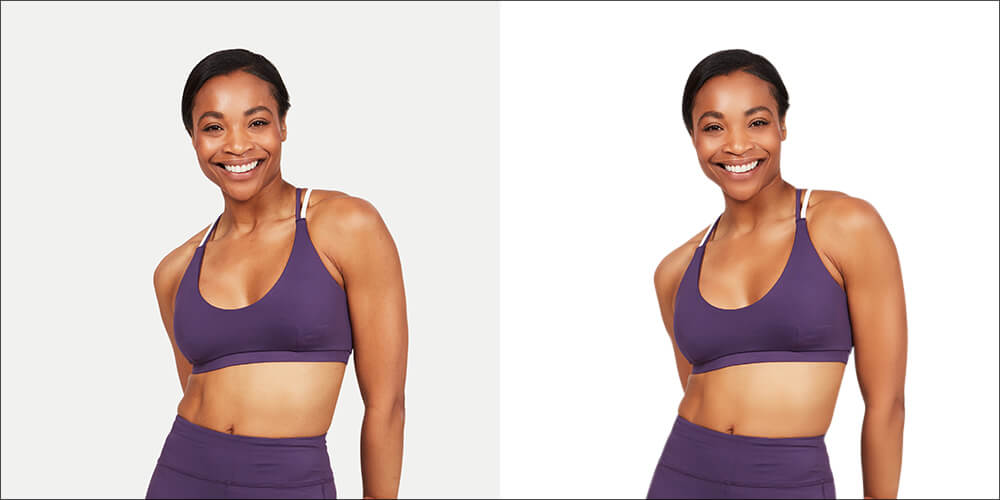Model photo retouching brings out the best in every image, refining details and enhancing natural beauty to create captivating visuals that leave a lasting impression and elevate brand appeal. If you run a beauty or fashion company, you’ll need model photos to show off your products in a professional way. Model photography of high quality necessitates the skills of a digital photographer. It’s not over yet; model images require photo retouching to fine-tune various aspects of the images, such as skin smoothing, dark circles beneath the eye, hair masking, teeth whitening, and more.
If you want to stay ahead of the competition, you’ll need to go through some strategic photo retouching steps. You’re not alone if you have already retouched your photos. A large number of businesses retouch their images on a regular basis. It’s really simple: If you take a bad image and turn it into a great one, don’t you think it will boost your professional self-esteem? Yes, I believe so.
In this article, I’ll discuss what makes retouching more effective and how to retouch images to get the best results. When retouching your photos, there are numerous factors to consider. Before we get into the details, let’s define what photo retouching entails and how it works.
What is model retouching?

Model photo retouching removes all flaws from photographs and makes necessary adjustments to make them more appealing. This procedure includes skin smoothing, hair removal, shape adjustment, outline lengthening, teeth whitening, and more.
Model photo retouching has a number of benefits, including consistency, quality, and a positive impression. It’s simple to attract customers and increase sales with retouched images. However, we discovered the hard way that retouching images require great care and attention to detail. Removal of skin blemishes, scars, marks, hairs, and other complex image editing tasks are just a few of the complex image editing tasks we complete, resulting in flawless images.
You can read more about Importance of Retouching Ecommerce Product
Why Model Photo Retouching Is So Important

It is important to retouch your model photos because it enhances their beauty. While hiring a model for your products will cost a lot of money, photo retouching will save you a lot of time and effort. Because it doesn’t matter if the images have adequate color sharpness, cleaning, and other features. Retouching can also improve the model’s appearance, and it’s a great way to attract attention.
Last but not least, retouching your photos increases people’s interest in the product and makes it more appealing to your targeted customers. Many online businesses have used a photo retouching service because it allows them to have edited photos for their web pages and sell the product. Aside from that, professional retouching is a good idea for any photo, whether it has an error, a missing background, or was taken during a bad photoshoot.
Here are the facts that you should consider when photo retouching:
Proper Use Of Spot Healing Brush Tool
If your images have wrinkles, blemishes, or other distracting elements, the spot healing brush tool’s content-aware modes are the best way to remove them.
The spot healing brush tool has a variety of options that you can use depending on your needs: brighter than the skin tone, darker than the skin tone
If you want to lighten your skin tone, use the spot healing brush tool’s content-aware feature and select the lighten option.
Open The Same Image In Two Windows
In Photoshop, you can open the same image in two windows at the same time and work on both the details and the overall image. This technique is particularly useful when working with two monitors, but it can also be applied to a single monitor.
Color Range Targeted Selections
When it comes to selecting difficult areas of an image, the Color Range command can be very useful. When there is too much information on a single image, you must concentrate on a single area. Quickly deselect those areas with the Lasso tool, leaving only the red in the shirt selected.
Use Lab Color Mode
Lightness, A, and B are the three channels in the Lab color mode. The Luminance values are stored in the Lightness channel, which contains the image’s detail. The relationship between green and magenta is denoted by the letter “A.” These are the same colors as Lightroom’s and Camera Raw’s Tint sliders. Sharpening photos in Photoshop adds contrast to the edges of an image to give the illusion of detail. The colors on the edges are not saturated or changed when you sharpen the Lightness channel. Due to the fact that the lab color mode does not have access to all of the Adjustment Layers, some of them will appear differently than their RGB counterparts.
Smoothing the Skin with the Clone Stamp Tool
Clone Stamp Tool is a must-have for retouching fashion photography. It allows you to copy and paste pixels from one part of the image to another and adjust the opacity. I use it to remove stray hairs, clean up the skin and background, and make any clothing flaws disappear.
Dodge & Burn
When it comes to image retouching, Dodge and Burn is a must-have tool. It can assist you in cleaning up and repairing problems where lightening or darkening the pixels will improve the situation. To avoid a fake and heavy-handed effect, keep the opacity low (under 10). Even with the low opacity, you can see which parts of the image are affected by Dodge and Burn.

Conclusion
Commercial fashion photography has a high-end, polished look that necessitates subtle but skilled retouching. These pointers will help you improve your commercial fashion photography skills and provide you with insider information on how to achieve the look you desire for your shoot.
If you want to hire professional photo retouching services, choose UK Clipping Path, a leading photo retouching company, to get the best services you will ever have. Get a free trial if you are not sure about the quality of our services.


